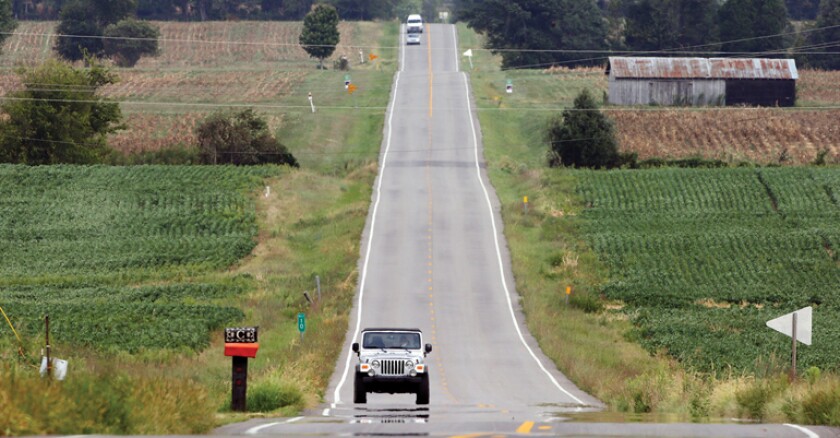The trend is being led, in part, by the group Valley Clean Air Now (Valley CAN). Partnering with Valley CAN is Electrify America, which supports the development of one of the largest networks of EV charging ports. This teamwork represents an example of how to grow EV adoption in rural areas.
“What we have found is that it’s much more effective, in those communities, to partner with a local organization that’s been on the ground for years,” said Matthew Nelson, director of government affairs for Electrify America, speaking at the City of Tomorrow Symposium in late June. City of Tomorrow, organized by Ford Motor Company, brings together thought leaders to explore public policy, design and economic forces affecting modern mobility.
“They bring this down to a level that is easy for someone with very little time, and they do it from the perspective of trusted spokesperson,” Nelson added, referring to how Valley CAN has been able to convince more than 2,000 rural households to get an electric car.
Compared to urban populations, rural communities have had significantly less exposure to EVs, often not fully understanding their abilities or incentives, and sometimes hold a general distrust of technology, which can be perceived as a marker of the urban elite.
“They think of them [EVs], especially folks in rural areas, think of them as something someone else drives,” said Lori Weigel, a principal with New Bridge Strategy, which has conducted surveys of EV usage and adoption.
During a City of Tomorrow panel discussion, Weigel pointed out that most rural residents say they don't know anyone who has an EV.
“It’s 20 points higher, in terms of knowing someone, when you get to urban voters,” she said.
To capture the attention of rural drivers, it’s important for automakers, EV advocates and others to “meet them where they’re at,” said James Decker, mayor of Stamford, Texas, a town of about 3,000 residents north of Abilene. Rural Americans aren't impressed by media reports on EVs. As such, county fairs and agricultural equipment shows are two types of events that can expose rural Americans to electric cars and trucks.
“You go to those things and people see the next level of technology and start investigating and where it makes sense," Decker said during the panel. "That’s how you get the early adopters to it."
Decker also suggested to make sure any marketing around EVs highlights how the vehicles affect overall costs.
“It comes down to dollars and cents," Decker said. "If it’s a good fiscal decision … I’ve got a lot of constituents or friends here that make their living on agriculture or indirectly related to agriculture. And right now, agriculture’s margins are slim."
Partnerships with local organizations and better communication about the costs and uses of EVs can help win over rural drivers, say experts. But the uphill battle to adoption is still studded with what Andrew Tuck, senior campaign manager with The Nature Conservancy, termed “cultural issues.”
“There are these cultural issues in some rural areas — in more conservative areas — that, ‘Hey, I think I’d like the whole idea of these EVs, but I don’t want to be the first one to buy them. I don’t want my neighbors to think I’m on the other team,’ or something like that,” said Tuck during the panel.
In 2020, there were about 1.8 million registered EVs in the United States, a threefold jump from 2016, and about 7 percent of U.S. adults today say they own an EV or hybrid vehicle, according to a recent survey by the Pew Research Center. In the first half of 2021, sales of EVs more than doubled compared to the same period in 2020, according to a report in The Wall Street Journal.
EV experts on the panel anticipate rapid growth in EV adoption in the next five years. This increase will be driven by more familiarity with EVs among consumers, more models that fit popular niches like trucks and SUVs and an expanded charging network. Nelson believes sales could be "10 or 15 times our sales now."
“The more rural communities start to see these EV pickup trucks that are actually doing these really rugged outdoorsy work, and they’re performing in snow, and they’re seeing their neighbors actually liking these things, it’s going to change the game,” Tuck said.









